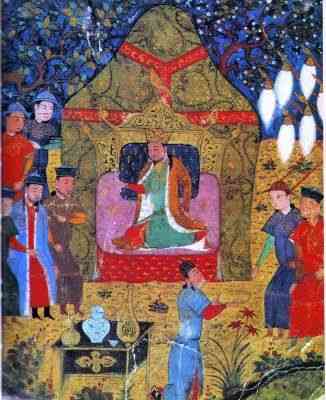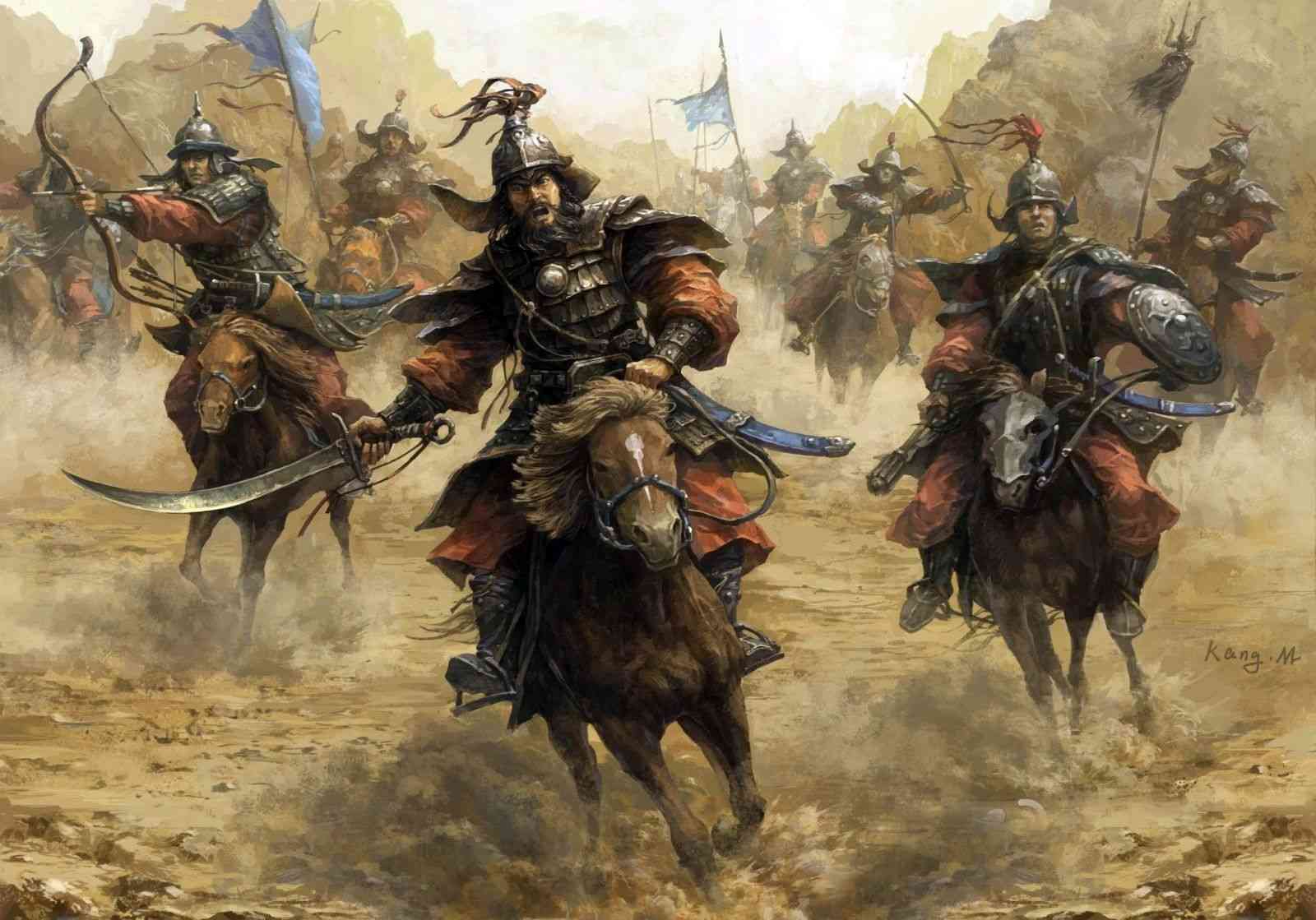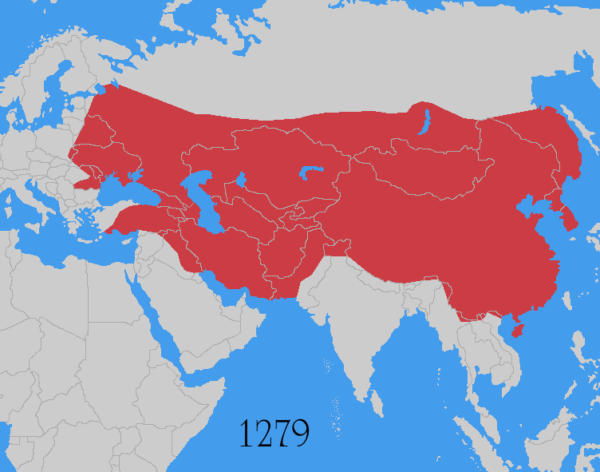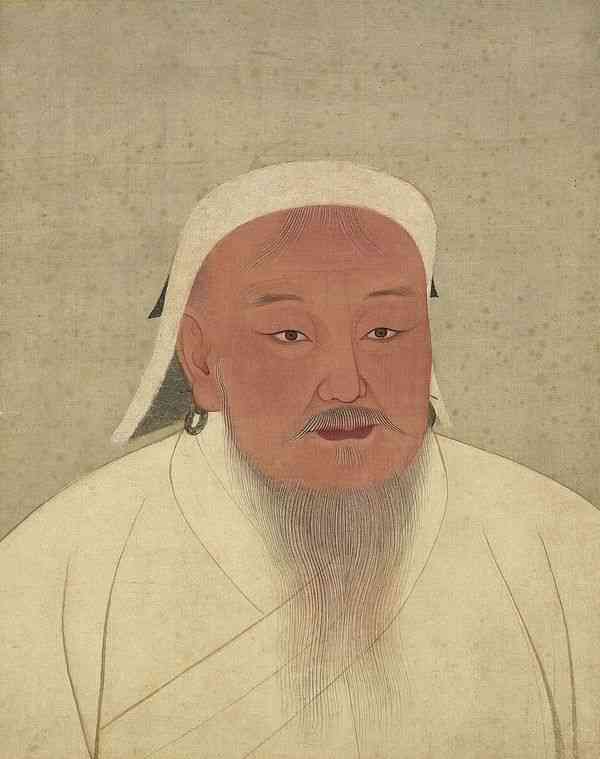Birth:
Genghis Khan was born into a powerful family in central Mongolia along the Onon River in 1162, and his father named him Temujin in honor of an enemy.
From the Tatars he had a special respect.
Early life:
He inherited the leadership of a Mughal tribe after the assassination of his father when he was not yet three.Ten years of age, so the rest of his family lived in a state of fear and dismay.The tribes hostile to them.
His beginnings: He lived his first years as an illiterate peasant, until he was captured by a hand.One of the tribes competing with his tribe and to prevent his escape, put a wooden collar around his neck.This incident had a major impact on his rebellion to become the most powerful man in the world.To prevent his tribe from being assaulted, he united with a tribal sheikh, who was called Togril.A friend of his father.
Tribal unification:
The Mongol tribes were in a state of revenge wars with each other, or aggression against
The neighboring countries, but this aggression did not take the form of organized battles.
And before Temojin reached the age of twenty, he had begun documenting nudity
Cooperation between many clans and tribes, and then through his marriage to the daughter of a neighbor Strong, and while his alliances were still few and confined, a tribe arose
Among the hostile tribes, which is the Merkits tribe, with a raid on.
Timogene camp and the kidnapping of his wife, after that, Timogene increased his efforts
To unite the neighboring families, he managed to defeat within one year.The Meerkites and save his wife.Other tribes were encouraged to join Temogen due to the victories.Achieve it, especially as he has worked to attack and defeat those who stood in his opposition. Temojin, then, allowed survivors to die in the aftermath of each battle.His battles against his enemies choose between joining his forces or facing death.In 1206, Temujin had already united all Mongol tribes in.One union after the completion of the conquest of Mongolia and the establishment of its capital in Karkorm, and took.He has the title ((Genghis Khan)) which means the emperor of the world or the absolute master.

His army:
Genghis Khan asked all the tribes that joined him to keep a permanent force.And be prepared to defend the tribal lands or carry out an attack.He organized his forces on a decimal basis, as the clique includes ten soldiers, and it consists Secret from ten clans, the battalion from ten companies, and so on, until you reach.The level of what is called (Tumens) which includes ten thousand.A man, and he took the sons of Genghis Khan and his family and clan.The main leadership positions in his army and imposed a strict training system And discipline.
All members of the Mongol army were riding on horseback and there was none Man group.The cavalry was divided into two classes:
Heavy cavalry: armed with spears and swords, who are protected by helmets
Leather and chest shields, they made up almost half of Genghis Khan's army.
A light cavalry: armed with bows and arrows, who do not use any
Protective equipment only for the leather helmet.
Genghis Khan used an extensive network of spies and scouts who were.They convey the enemy's details and positions, and when reconnaissance personnel are able to detecting the enemy's weak spot, Genghis Khan was rushing to build strength Made up of 250 thousand men to attack that site, preceded by a heavy cavalry.Archers support from behind.The Mughal army did not remain static, but was constantly developing and countries.The situation calls for, when Genghis Khan was forced to confront the cities with Strong fortifications in northern China introduced catapults and siege machines various that can be disassembled and carried on the appearance of animals.

Psychological factor:
It caused terror, both as a psychological tool and as a characteristic of the art of war at the time,An important role in Genghis Khan's tactics, and his army rarely kept prisoners
War, it was massacring both civilians and military personnel when they took over
the cities . The Mughal army became so famous, too.The enemy prefers to flee rather than try to confront Genghis Khan's brutal army.
Expansions:
Genghis Khan moved wars out of his country, and so ended the wars Eligibility, he invaded China in 1206 and managed, in two years, to cross).The Great Wall of China (), and attacked in 1213 the Northern Shan Empire.China, and by 1215 had seized most of its territory, including it.The capital of Yinsheng (present-day Piping) subdued all parts of China.
His control, and in 1218 added the Korean Peninsula to his empire. In response to the killing of Mongol merchants, Genghis Khan directed in 1219.His army was towards the west against the Turks, and within a short time he managed to seize.On the region that includes today Iraq, Iran and West Turkistan, and then he attacked and captured the region that includes northern India and Pakistan, and while his armies were crawling over Russia, seized Afghanistan, and invaded Russia in the year 1222.
By 1226 Genghis Khan was to rule an empire that stretched from Poland to West to Korba in the east, and Vietnam in the south, to the coast of Russia On the frozen ocean in the north.

His End:
Genghis Khan tried after he was over sixty, and after his condition worsened.He would return to Mongolia from his campaign to put down a rebellion in China.However, he died during the return journey, and he had appointed one of his sons shortly before his death
To wriggle in command of the army and order him to slaughter the Chinese warriors after their defeat.
Conclusion:
Genghis Khan's bloody empire has lasted for over 150 yearsAfter his death, thanks to the able leadership of his children and grandchildren. Although Russia and China were able to carve out parts of His empire, the Mongol state remained, and Genghis Khan is still a national hero in Mongolia today, the name Genghis Khan is still in Russia and abroad
People are reminded of the world's hegemony and the might of military power.



